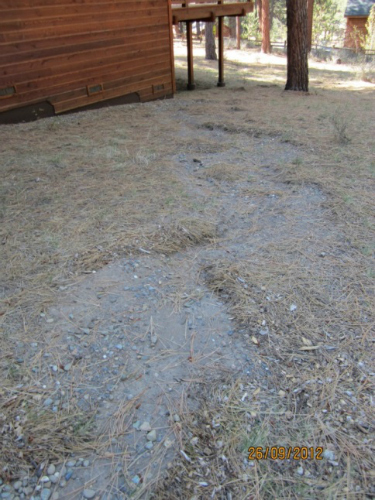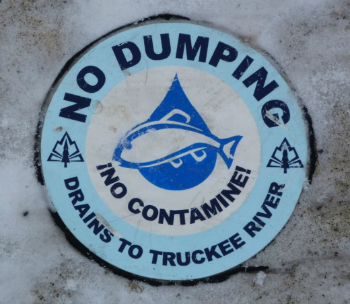by Erin Casey, Director of Land Use Compatibility
Have you noticed where water flows after it lands on the ground? Does it spill onto the road making its way to a nearby stormwater drain or roll off a few leaves and infiltrate into the ground?
If you’ve never stopped to follow a drop of water, I’d invite you to do so. It’s amazing what we can learn about our watershed by following the path one drop of water takes.
Water follows the path of least resistance. It will permeate into the ground (yay!) or run downslope until its captured – often by a road or driveway (boo!). When captured (vs infiltrating) the runoff can collect and carry pollutants such as fine sediment (dirt).
Plants, mulch or gravel can slow down the flow, and it infiltrate into the ground. Our goal with River-Friendly Landscaping is to do just that – encourage water to infiltrate.
River-Friendly Landscaping program improves water quality on residential properties by:
- Reducing erosion from yards
- Reducing the amount of runoff
- Increasing infiltration
The Truckee River is listed as impaired or polluted by the U.S. EPA for sediment. When a drop of water leaves your yard it often ends up in a stormwater drain, emptying into the Truckee River. That water typically is not be filtered or cleaned beforehand.
 Even if you don’t live next to the river, when it rains or the snow begins to melt, find a drop and follow its path. You’ll see that all of us have an impact. Working together, we can make a difference.
Even if you don’t live next to the river, when it rains or the snow begins to melt, find a drop and follow its path. You’ll see that all of us have an impact. Working together, we can make a difference.
A rivulet forms on unprotected bare dirt at a home in Glenshire, eroding the soil. (top photo) Storm drain stickers remind us that runoff from yards and roads drains to the Truckee River. (bottom photo) Photo credits: Erin Casey.
